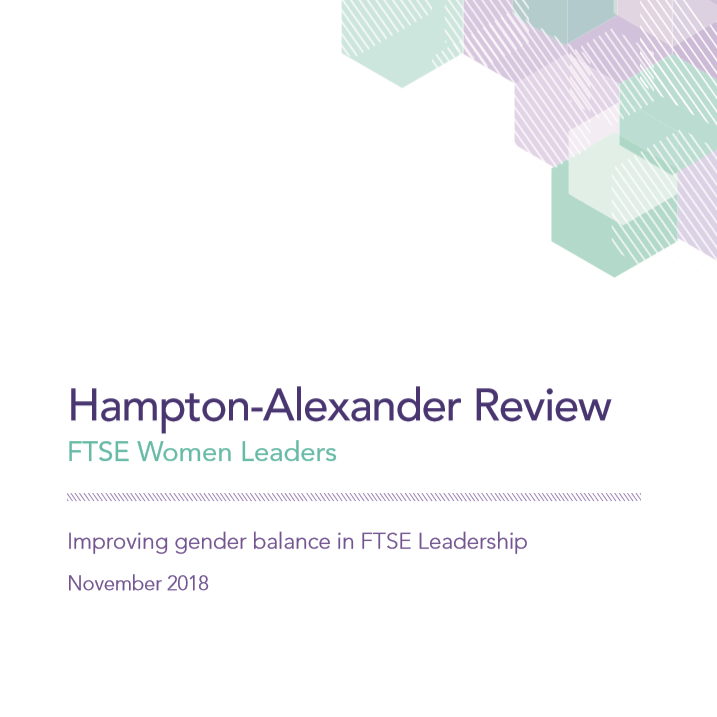Government papers: FTSE women leaders: Hampton-Alexander review
The review focuses on: increased female representation on FTSE boards and women in senior executive positions.
It continues the work of Lord Davies in the Women on boards reports. This latest report looks at improving gender balance in FTSE leadership.
Key findings
- The FTSE 100, following a year of minimal progress in 2017, has seen the number of women on the Combined Executive Committee and Direct Reports increase to 27 per cent in 2018, up from 25.2 per cent last year.
- The total number of positions has increased this year, as has the turnover and the appointment rate for women, albeit the appointment rate is still heavily skewed with around 65 per cent of all newly available roles going to men.
- The FTSE 250 has seen a slower year with the number of women on the Combined Executive Committee and Direct Reports increasing marginally to 24.9 per cent in 2018, up from 24 per cent last year.
- The total number of positions in the FTSE 250 has decreased this year, with turnover and the appointment rate for women both slightly up. Again the appointment rate is skewed with 78 per cent of appointments to Executive Committees going to men and 69 per cent of newly available roles in the Direct Reports going to men.
- If progress continues at a similar rate, the FTSE 100 is ‘on track’ to achieve the 33 per cent target for Women on Boards by 2020. Elsewhere a step change is needed in pace, which means half of all available appointments in the next two years – both Boards and the Combined Executive Committee and Direct Reports, need to go to women to achieve the 33 per cent target.
The scope of the Review captures more than 23,000 leadership roles in 350 of Britain’s largest companies. It covers the board and extends down two leadership layers below the board.







